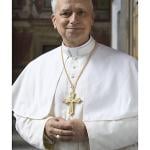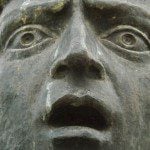Washington D.C., May 1, 2015 / 03:34 pm (CNA).- Espionage deep in the heart of Europe. Secrets in the KGB. Defection from a communist nation. Ion Mihai Pacepa has seen his share of excitement, serving as general for Communist Romania’s secret police before defecting to the United States in the late 1970s. The highest-ranking defector from communism in the ‘70s, he spoke to CNA recently about the connection between the Soviet Union and Liberation Theology in Latin America. Below are excerpts of the interview. All footnotes were provided by Pacepa.In general, could you say that the spreading of Liberation Theology had any kind of Soviet connection? Yes. I learned the fine points of the KGB involvement with Liberation Theology from Soviet General Aleksandr Sakharovsky, communist Romania's chief razvedka (foreign intelligence) adviser – and my de facto boss, until 1956, when he became head of the Soviet espionage service, the PGU1, a position he held for an unprecedented record of 15 years. On October 26, 1959, Sakharovsky and his new boss, Nikita Khrushchev, came to Romania for what would become known as “Khrushchev's six-day vacation.” He had never taken such a long vacation abroad, nor was his stay in Romania really a vacation. Khrushchev wanted to go down in history as the Soviet leader who had exported communism to Central and South America. Romania was the only Latin country in the Soviet bloc, and Khrushchev wanted to enroll her “Latin leaders” in his new “liberation” war.I learned about Sakharovsky from your writings, but I could not find any other relevant information about him. Why? Sakharovsky was a Soviet reflection of the Cold War's hot years, when not even all the members of the Israeli and British governments knew the identity of the heads of Mossad and MI-6. But Sakharovsky played an extremely important role in shaping Cold War history. He authored the export of communism to Cuba (1958-1961); his nefarious handling of the Berlin crisis (1958-1961) generated the Berlin Wall; his Cuban Missile Crisis (1962) brought the world to the brink of nuclear war.Was the Theology of Liberation a movement somehow "created" by Sakharovsky's part of the KGB, or it was an existing movement that was exacerbated by the USSR? The movement was born in the KGB, and it had a KGB-invented name: Liberation Theology. During those years, the KGB had a penchant for “liberation” movements. The National Liberation Army of Columbia (FARC), created by the KGB with help from Fidel Castro; the “National Liberation Army of Bolivia, created by the KGB with help from “Che” Guevara; and the Palestine Liberation Organization (PLO), created by the KGB with help from Yasser Arafat are just a few additional “liberation” movements born at the Lubyanka -- the headquarters of the KGB. The birth of Liberation Theology was the intent of a 1960 super-secret “Party-State Dezinformatsiya Program” approved by Aleksandr Shelepin, the chairman of the KGB, and by Politburo member Aleksey Kirichenko, who coordinated the Communist Party's international policies. This program demanded that the KGB take secret control of the World Council of Churches (WCC), based in Geneva, Switzerland, and use it as cover for converting Liberation Theology into a South American revolutionary tool. The WCC was the largest international ecumenical organization after the Vatican, representing some 550 million Christians of various denominations throughout 120 countries.The birth of a new religious movement is a historic event. How was this new religious movement launched? The KGB began by building an intermediate international religious organization called the Christian Peace Conference (CPC), which was headquartered in Prague. Its main task was to bring the KGB-created Liberation Theology into the real world. The new Christian Peace Conference was managed by the KGB and was subordinated to the venerable World Peace Council, another KGB creation, founded in 1949 and by then also headquartered in Prague. During my years at the top of the Soviet bloc intelligence community I managed the Romanian operations of the World Peace Council (WPC). It was as purely KGB as it gets. Most of the WPC’s employees were undercover Soviet bloc intelligence officers. The WPC’s two publications in French, Nouvelles perspectives and Courier de la Paix, were also managed by undercover KGB – and Romanian DIE2 - intelligence officers. Even the money for the WPC budget came from Moscow, delivered by the KGB in the form of laundered cash dollars to hide their Soviet origin. In 1989, when the Soviet Union was on the verge of collapse, the WPC publicly admitted that 90% of its money came from the KGB3.How did the Theology of Liberation start? I was not involved in the creation of Liberation Theology per se. From Sakharovsky I learned, however, that in 1968 the KGB-created Christian Peace Conference, supported by the world-wide World Peace Council, was able to maneuver a group of leftist South American bishops into holding a Conference of Latin American Bishops at Medellin, Colombia. The Conference’s official task was to ameliorate poverty. Its undeclared goal was to recognize a new religious movement encouraging the poor to rebel against the “institutionalized violence of poverty,” and to recommend the new movement to the World Council of Churches for official approval. The Medellin Conference achieved both goals. It also bought the KGB-born name “Liberation Theology.”Theology of Liberation had key leaders, some of them famous “pastoral” figures, some others intellectuals. Do you know if there was any involvement of the Soviet bloc in promoting either the personal image or the writings of such personalities? Any specific connection with Bishops Sergio Mendes Arceo from Mexico or Helder Camara from Brazil? Any possible direct connection with liberation theologians such as Leonardo Boff, Frei Betto, Henry Camacho or Gustavo Gutierrez? I have good reason to suspect that there was an organic connection between the KGB and some of those leading promoters of Liberation Theology, but I have no evidence to prove it. For the last 15 years of my life in Romania (1963 - 1978), I managed that country's scientific and technological espionage, as well as the disinformation operations aimed at improving Ceausescu's stature in the West. I recently glanced through Gutierrez's book A Theology of Liberation: History, Politics, Salvation (1971), and I had the feeling that it was written at the Lubyanka. No wonder he is now credited with being the founder of Liberation Theology. From feelings to facts, however, is a long way. ........................................................... Footnotes: 1) Pervoye Glavnoye Upravleniye, or First Chief Directorate of the KGB 2) Departamentul de Informatii Externe, Romania’s foreign intelligence service. 3) Herbert Romerstein, Soviet Active Measures and Propaganda, Mackenzie Institute Paper no. 17 (Toronto, 1989), pp. 14-15, 25-26. WPC Peace Courier, 1989, no. 4, as cited in Andrew and Gordievsky, KGB, p. 629. Read more















